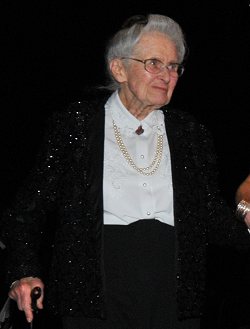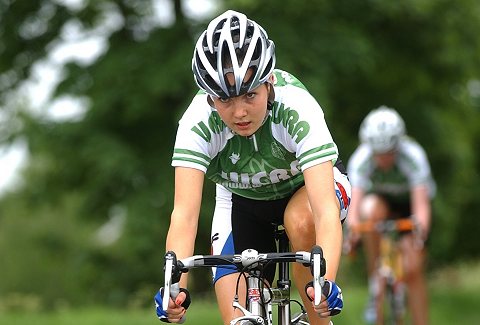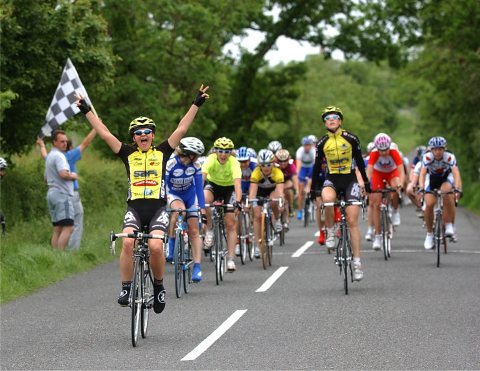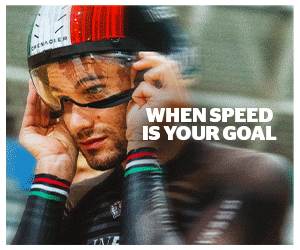With the sport of women’s cycle racing getting ever popular and a UCI stage racing to these shores in 2013, Jon Miles looks back at the history of it in Britain
 |
Introduction
I’ve been involved in the sport of cycle racing in Britain for a relatively short short time having got the bug back in 1996. First there was the racing and then the reporting and since the late 90’s, Jon Miles has been an invaluable ‘unsung hero’ in the sport of women’s racing, organising races and assembling women’s teams. With new teams springing up and the first Women’s UCI stage race set to take place in Britain next season long after Jon organised international events such as the Bedford Two day, Jon sent this feature in last night to highlight how far the sport has come …
PART 1
Jon writes… Imagine a time when women were not allowed to race on the road, when they were banned and could only chase place-to-place records. When there were no World Championships and the Olympics were a closed shop for any women. Marguerite Allen was perhaps the first professional woman cyclist when she set many place-to-place records and then came along perhaps the most famous female cyclist.
Eileen Sheriden, small and always smiling, took record breaking to a new level but even so women’s racing was seen as nothing more than a novelty. Indeed there were not even national championships to race for. But plans were being made to change the role of women in the sport and it was directed by perhaps the most remarkable women ever to enter sport, any sport and was to make an impact that was to reverberate around the world.
Eileen Gray was the founder member of the London Racing Combine that was established to restart track racing after the Royal Air Force vacated Herne Hill at the end of the war and started a long campaign to get women recognised in the sport of cycling.
In 1946 three women from England were invited to compete against each other at track meet in Copenhagen, where they had never seen women racing before – the first ever racing trip abroad for women, and an idea was born. The Women’s Track Racing Association was formed in 1946 which was to become, in 1956, the Women’s Cycle Racing Association with a determination that women would have their World Championships despite the world wide opposition that they would face.
Between 1948 and 1955 Eileen Gray (above) organised racing for women on the track as they were still banned from racing on the road; lobbying to raise the status of women began. In 1954, the women’s organisation pressed the then governing body, the National Cyclists Union (NCU) to allow them to organise a World record attempt but the NCU delegates ‘forgot’ to put this idea to the annual meeting of the UCI.
Not daunted, the lobbying continued and a year later, 1955, the first ever World record for women was set at Herne Hill in London when Daisy Franks established a flying start 500 metres; later in the same year Joy Bell and Kay Hawkins also established World records.
In 1955, track racing for women was booming as it was the only form of racing that was open to them when an invitation was received from France for a British women’s team to enter a 3 day stage race in Roanne. A selection process was set but this was difficult as women were still not allowed to race on the road under the NCU rules.
But the Whitewebbs CC included a women’s race as part of the races on Stapleford Tawney airfield and 35 women entered and so the first ever women’s championship (although not recognised by the sports governing body) was taken by Beryl French with Joy Bell in second and a J Hardy in 3rd place.
The team that travelled to France totally dominated the racing with winner Millie Robinson, 2nd June Thackery, 7th Kay Hawkins and Bobby Tingey in 9th place. The riders donated all their prize money to the women’s international racing fund. The publicity this first women’s road race received in France was so great that later in that year, the organiser M Leulliot ran a 5 day race, calling it the Tour de France Feminine, which upset a good many people in France but brought even more publicity.
Millie Robinson won again and established herself as the outstanding woman rider in the world. June Thackery was again 2nd with Sylvie Whybrow in 7th and 9th Beryl French. Later, back in England, Kay Hawkins set two more World records for the distances of 5 km and a 1 km.
Young riders being given the opportunity to race for the WCRA team in the Bedford 3 Day in 2005
In 1956, with women now racing abroad and being allowed to race on the road at home, the WCRA adopted the famous green and white racing jersies. Having seen the vast amount of publicity that the women had received in France, the Harrogate Festival decided to include a women’s road race, the first International road race for women in Britain. Millie won in a breakaway and again June Thackery was in 2nd followed by Bobby Tingey and Muriel Maitland.
Meanwhile, the Roanne event in France was extended to 8 days and the NCU chose the team to represent Britain. Beryl French won the event but Mille was unlucky to lose her gears on the last stage. 1957, and the NCU was in conflict with a new racing body that was determined to promote road racing called the British League of Racing Cyclists (BLRC) and this conflict was taken to the UCI as world governing body. This meant that the NCU had little time for women’s affairs in the sport so it was down to the WCRA to push forward.
At the start of the year, they issued a “Statement of Policy” saying that the WCRA would run their own World Championships if the UCI did not grant women their World Championships. The then editor of ‘Cycling’ produced a leaflet in three languages for the WCRA to take to the UCI Congress in Paris but on the day that Eileen Gray was due to travel to France to present this to the UCI ,her father died so she was a day late in arriving and so less time for lobbying the world delegates.
She was not an official delegate and had paid her own way. Eileen met M Stobbliere, the influential Belgium President plus other Europeans were helpful but at the Congress itself, the motion for a World Championships for women was defeated although it gained a majority but not the required percentage.
The UCI President M A Joinard advised Eileen to organise a road race over the World Championship distance to prove that the support was there. In May of that year, the organiser of the 8 day stage race in Roanne, informed the WCRA that to raise funds, a competition had been held in Roanne and the first prize was a visit to Eileen’s home!
An international line up in the 2005 Bedford 3 Day.
The WCRA Road Race Championships was held at Chobham in Surrey and was the first ever WCRA Championships and was now legal and recognised by the NCU. This race was oversubscribed and indicated the rapid rise of women’s racing. Later in 1957, the WCRA organised its first International weekend with a sprint and pursuit at Herne Hill and the road race in Green St Green – Kent. Wally Gray organised both events, and of the riders invited, Yvonne Reynders of Belgium and Elsy Jacobs of Luxembourg, both went on to win World Championships; there were also East Germans and Dutch riders with the later riding with Belgium licences as racing women were not recognised in Holland!
Eileen Gray and some of the riders were interviewed by Eamon Andrews for the BBC Light programme (radio). All the counties (except Russia) that would later support the first official World Championships were present. Due to the narrow vote loss at the UCI Congress and the support received from influential Europeans, the WCRA did not carry out their threat and call the series a World Championship.
In July, the WCRA took 15 riders to the 3rd Lynonnais Auvergne 8 day. This was 2 teams of 6 plus 3 from Scotland and Wales who would ride with some Americans. An invitation was also received to send a team to East Germany and the riders were successful in Leipzig. At the end of the year the WCRA had a letter from Russia saying that they would support a World Championship for women.
1958 was to be the most decisive year ever in the sport for women riders in the world. It was a year that would dramatically change everything that was to follow and it was all down to the WCRA and Eileen Gray.
(to be continued)
Article: Jon Miles
Other Results on VeloUK (including reports containing results)
- Features, Reports, Results
- NEWS: 2025 ELITE DEVELOPMENT TEAMS
- Crit Result: Odd Down Winter Series Rd 1
- Crit Result: Chilly City Crits Rd 2
- CX Result: London/South East CX League 10
- Track Result: 2025 Manchester Regional Track League
- Another World Title for Zoe Backstedt
- TRAGIC NEWS: Aidan Loses His Life in Training Accident
- Tom Pidcock wins the AlUla Tour
- Q&A with Elliot Fraser (360cycling)
- GB Team Win World Title at CX Worlds
- Second stage win for Tom Pidcock in AlUla Tour
- 2025 West Midlands road race league
- NEWS: Ribble Cycles Bike Sponsor for Smurfit Westrock Team
- QUIZ TIME! Q&A with young talent Mark Ketteringham
- Startlist: RCR Portsdown Classic Road Race (February 9)
- Crit Result: Full Gas Winter Circuit Series #13
- Crit Result: Chilly City Crits Rd 1
- CX Result: Linlithgow Cross 2025
- QUIZ TIME!! REBECCA WOODVINE
- CX Result: London and South East CX League 9
- CX Results: Eastern Region CX League Rd 10
- CX Result: Wessex Cyclocross League Round 12
- QUIZ TIME! Q&A with Oscar Nisbett
- CX Result: NWCCA League Round 11
- Track Result: Manchester Regional Track League
- QUIZ TIME: Britain’s Joe Turnbull
- CYCLOCROSS: 2025-26 LLOYDS NATIONAL TROPHY SERIES CALENDAR
- Crit Result: Full Gas Winter Circuit Series #12
- QUIZ TIME! Dan Kemp (Prologue Junior Race Team)
- CX Result: Jersey Cyclocross League Jan 19
- CX Result: Army Cyclocross Champs 2025
- CX Result: Leicestershire Cyclocross League Rd 6
- CX Result: Western CX League Round 9
- CX Result: Tross Cross SQ R3 (Scotland)
- Track Result: 2025 Manchester Regional Track League (Jan 17)
- CX Result: Notts & Derby CX League 8
- FEATURE: Q&A with Carolyn Speirs
- Q&A with Sam Chaplin of Cycling Sheffield
- Quiz Time: James Hartley heading to France
- Rental getaway for cycling families — Casa Guadalest
Other News on VeloUK
- NEWS: 2025 ELITE DEVELOPMENT TEAMS
- Another World Title for Zoe Backstedt
- TRAGIC NEWS: Aidan Loses His Life in Training Accident
- Tom Pidcock wins the AlUla Tour
- 2025 West Midlands road race league
- NEWS: Ribble Cycles Bike Sponsor for Smurfit Westrock Team
- Startlist: RCR Portsdown Classic Road Race (February 9)
- CYCLOCROSS: 2025-26 LLOYDS NATIONAL TROPHY SERIES CALENDAR
- 2025 British CycloCross Championships Day 2
- 2025 British CycloCross Championships Day 1
- TEAM NEWS: RAPTOR FACTORY RACING
- STARTLIST: 2025 British Cyclocross Championships
- Q&A: Louis Herring (Prologue Junior Race Team)
- BRITISH CYCLOCROSS CHAMPIONSHIPS RIDER LIST
- NEXT WEEK: BRITISH CYCLOCROSS CHAMPIONSHIPS – CYCLOPARK
- 2025 EVENTS: RTTC 10 mile TIME TRIAL CHAMPIONSHIP
- THIS WEEKEND: NATIONAL TROPHY SERIES 2024/25 ROUND 5
- BMCR Newsletter January 2025
- TEAM NEWS: BCC Race Team 2025 Squad Announcement
- TEAM NEWS: 2025 Handsling Alba Development Road Team
- Q&A with Paul Opie & Tom Mead
- Team News: New Junior team for West Lothian Clarion
- 2025 Events: Plymouth Corinthian
- News: Junior/Youth National Series 2025
- Startlist: Round 4 National Trophy Cyclocross (Dec 7/8)
- ELITE ROAD AND CIRCUIT RACES CALENDAR
- Sad News: No Saint Piran team for 2025
- News: The Pedal Club Lunch (November)
- Team Update: Brother UK / Onform 2025
- 2025 NATIONAL TRACK CALENDAR ANNOUNCED
- CHS CICLISMO – Complimentary daily massage and spa!
- Team News: Fensham Howes – MAS Design 2025
- National Trophy Cyclocross: Round 3 (Torbay)
- Tofauti Everyone Active announces new partners and new name for 2025
- Rider News: Matt Thompson signs for French Team BMC Bezier
- News: Youth Tour of Scotland 2025
- FEATURE: Billy Ladle’s Stellar Season Recognised at British Cycling Awards
- 2025 Prologue Junior Race Team
- STARTLIST: BUCS Hill Climb Championships
- News: West Midlands Road Race League Winner 2024

























